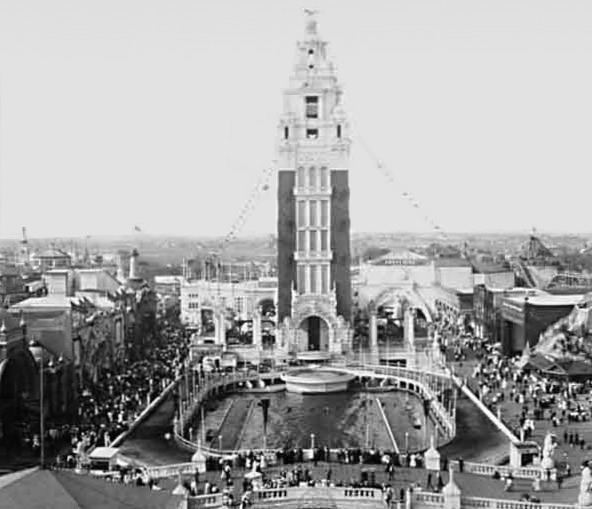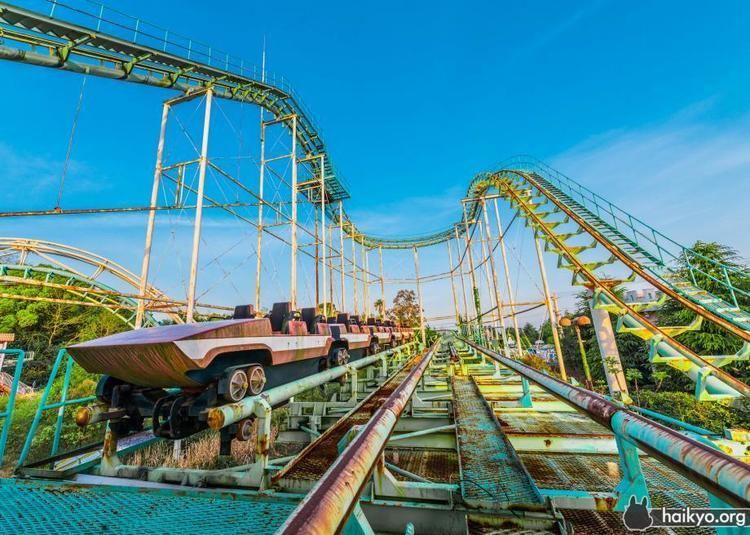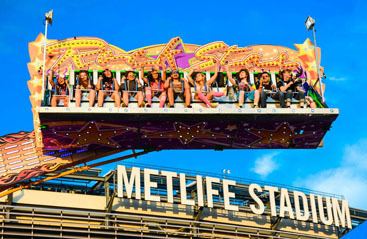Opened 1904 | Owner William H. Reynolds | |
 | ||
Location Coney Island, Brooklyn, United States Closed Destroyed by fire in 1911 Similar Coney Island, Steeplechase Park, Coney Island Cyclone, Astroland, Parachute Jump | ||
Dreamland was an ambitious amusement park at Coney Island, Brooklyn, New York City from 1904 to 1911. It was the last, and considered the grandest, of the three original iconic large parks built on Coney Island, the other two being Steeplechase Park and Luna Park.
Contents

Creation

The park was founded by William H. Reynolds, a former state senator and successful Brooklyn real estate developer. He designed the park to compete with Luna Park, a neighboring amusement park opened in 1903. Dreamland was supposed to be refined and elegant in its design and architecture, compared to Luna Park with its many rides and chaotic noise.

Reynolds purchased a 15-acre (6.1 ha) parcel at Surf Avenue and West Eighth Street on which to build the park, using proxy buyers in order to hide his real ambitions for the lot. Once he bought the site, he used political power to demolish West Eighth Street in order to expand the lot. Today, the site is near the site of the West Eighth Street subway station opposite Culver Depot, the then-terminal of New York City Subway's BMT Brighton Line and BMT Culver Line. The site is now the location of the New York Aquarium and the adjacent subway station.
Description
Opened on May 15, 1904, Dreamland was a park in which everything was reputed to be bigger and more expansive than in neighboring Luna Park. Dreamland had a larger central "Tower" and one million electric light bulbs illuminating and outlining its buildings, 4 times as many lights as Luna Park. Dreamland featured relatively high-class entertainment and dramatic spectacles based on morality themes such as "The End of the World" and the Orient Theater's "Feast of Beshazzar and the Destruction of Babylon." It also featured elegant architecture, pristine white towers, and some educational exhibits along with the rides and thrills.
Among Dreamland's attractions were a railway that ran through a Swiss alpine landscape, imitation Venetian canals with gondolas, a "Lilliputian Village" with three hundred dwarf inhabitants, and a demonstration of firefighting in which two thousand people pretended to put out a blazing six-story building fire every half-hour. However, many rides were imitations of Luna Park's. There were also two Shoot-the-Chutes with two ramps that could handle 7,000 hourly riders, a scenic railway called Coasting Through Switzerland, gondola rides through a nighttime model of Venice, a miniature railroad, and a simulated submarine ride. The side shows were owned by the Dicker family, who also owned the hotel next to the park. There was also a display of baby incubators, where premature babies, triplets who were members of the Dicker family, were cared for and exhibited. The doctors advised them of the new invention, but they could not use it because incubators were not approved for use in hospitals, so the triplets were placed in the side show, which was allowed. Two survived and lived on to have full lives.
In a bid for publicity, the park put famous Broadway actress Marie Dressler in charge of the peanut-and-popcorn stands, with young boys dressed as imps in red flannel acting as salesmen. Dressler was said to be in love with Dreamland's dashing, handlebar-mustachioed, one-armed lion tamer who went by the name of Captain Jack Bonavita. Bonavita, who commanded lions in the Bostock animal arena, had one arm amputated when his hand was severely clawed by one of the lions, and a blood infection spread through that hand.
Destruction
In spite of its many draws, Dreamland struggled to compete with Luna Park, which was better managed. In preparation for its 1911 season, many changes were made. Samuel W. Gumpertz (later director of the Ringling Brothers and Barnum & Bailey Circus) was put in the park's top executive post. The buildings, once all painted white in a bid for elegance, were redone in bright colors. On the night before opening day, a concession called Hell Gate, in which visitors took a boat ride on rushing waters through dim caverns, was undergoing last-minute repairs by a roofing company owned by Samuel Engelstein. A leak had to be caulked with tar. During these repairs, at about 1:30 in the morning on May 27, 1911, the light bulbs that illuminated the operations began to explode, perhaps because of an electrical malfunction. In the darkness, a worker kicked over a bucket of hot pitch, and soon Hell Gate was in flames.
The fire quickly spread throughout the park. The buildings were made of frames of lath (thin strips of wood) covered with staff (a moldable mixture of plaster of Paris and hemp fiber). Both materials were highly flammable, and as they were common in the Coney Island amusement parks, fires were a persistent problem there. Because of this, a new high-pressure water pumping station had been constructed at Twelfth Street and Neptune Avenue a few years earlier, but on that night it failed. Water was available, but there was not enough to contain the fire that enveloped Dreamland. The Dicker family's adjacent hotel also burned down in this fire.
Chaos broke loose as the park burned. As the single-armed Captain Bonavita strove to save his big cats with only the swiftly encroaching flames for illumination, some of the terrified animals escaped, but about 60 animals died. A lion named Black Prince rushed into the streets, among crowds of onlookers, and was shot by police. By morning, the fire was out and Dreamland was completely destroyed and never rebuilt. Early editions of The New York Times claimed the incubator babies had perished in the flames, but later the paper corrected this and reported that they had all been saved. According to contemporaneous accounts, a number of these saves were accomplished by Sgt. Frederick Klinck of the NYPD, who made several trips into the burning structure to rescue incubator babies.
Almost ten years after the fire, Reynolds, who by then owned the majority of Dreamland's outstanding bonds and stood to make a windfall, used his political connections to have New York City purchase the land on which Dreamland once stood. The city bought the area, valued at $1.5 million, for $1.8 million.
Art
Literature
The greatest roller coaster ride of all time took place on a balmy Sunday afternoon on Coney Island on September 6, 1901, at 4:07 P.M.
It was on a new coaster, called The Rough Rider, where each train was run by its own motorman. Done up in full San Juan Hill regalia. Instructed to make 'em scream, the louder the better--that's what brings in the paying customers. Until that afternoon when one of the ersatz Teddies, pushing his train at full speed, snapped off the rear two cars and sent them soaring out, sixty feet into the air above Surf Avenue. After the accident they didn't close The Rough Rider, or even change it. The crowds were greater than ever for the roller coasters--thanatos and eros, the death wish and the pleasure principle, all at the same time. You could see them in the long line, staring avidly at the twisted track, the hole in the guard rail where it had smashed through. Wondering what it was like-- The cars rising slowly along the impossibly steep track, jerking and grating on their chains. The dread growing steadily in the pit of the stomach, until that last, awful moment, when you pause for a moment at the peak, and look down over the impossibly narrow, curving track, face-to-face with what you have done. Yet always sure that at the very end, you will be pulled back from the brink-- Did they understand it? That's what all the gawkers, the rubberneckers in line wanted to know. After the impossible happened, and the chain broke, and they crashed through the last barrier--did they understand in those last, suspended moments above Surf Avenue, before they hit the ground, that theirs was the greatest thrill of all?